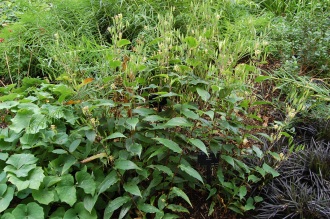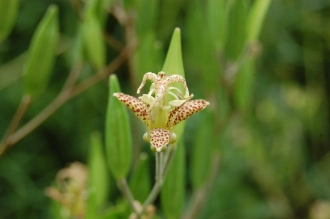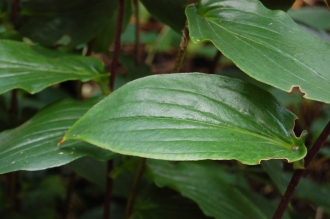Position: Full sun
Flowering period: Summer
Soil: Moist, well drained
Eventual Height: 1.2m
Eventual Spread: 35cm
Hardiness: 4b, 5a, 5b, 6a, 6b, 7a, 7b, 8a, 8b, 9a
Family: Liliaceae
Lilium regale is a deciduous bulbous perennial with an erect habit. Its mid green leaves are lanceolate with entire margins, up to 8cm long and 3mm across. Its fragrant white flowers are trumpet shaped, yellow at their centres with pink/ purple on their outsides, up to 14cm long and appear as terminal racemes. The roots of this plant appear from a bulb which can achieve a size of up to 35mm across.
Lilium regale, commonly known as King’s Lily or Regal Lily, is native to south west China. In its native habitat it grows on rocky slopes and river banks. It should be noted this plant is toxic to cats.
The etymological root of the binomial name Lilium is derived from the Greek leirion the name given to the Madonna Lily (Lilium candidum). Regale is from the Latin regalis meaning ‘regal’.
The landscape architect may find Lilium regale useful as a fragrant bulbous perennial for introducing into a mixed herbaceous perennial.
Ecologically, Lilium regale flowers are attractive to pollinating insects.
The Royal Horticultural Society have given Lilium regale their prestigious Award of Garden Merit in 1993.
Lilium regale prefers moist, humus rich, well-drained soils. It tolerates most pH of soil, although it prefers an neutral to acid pH.
Lilium regale requires little maintenance. The scarlet Lily Beetle may attack this plant. The stems of this plant may require staking to support its relatively large blooms.
![]()
Landscape Architecture












